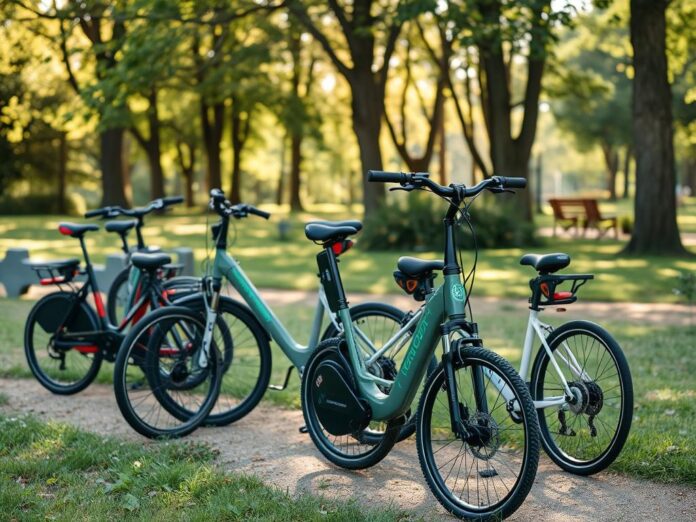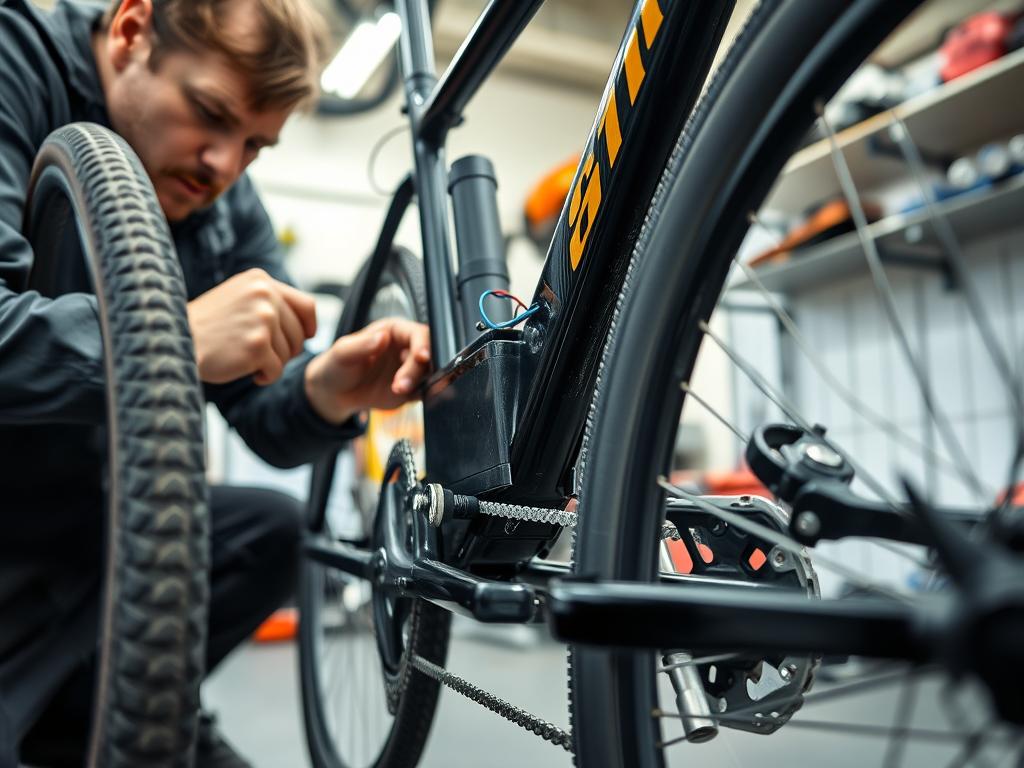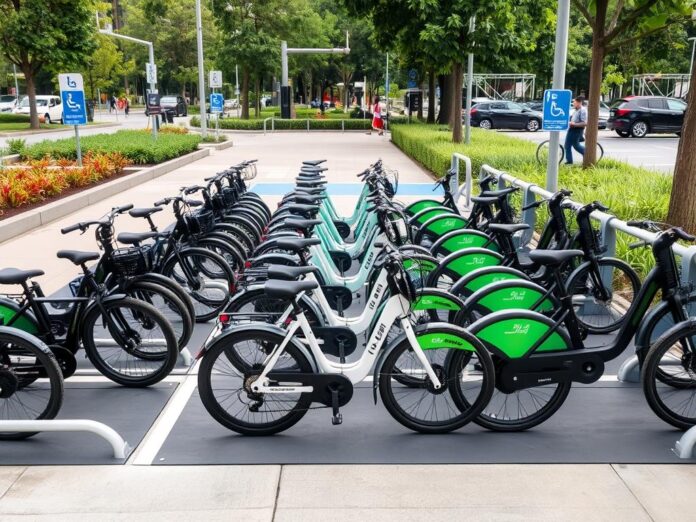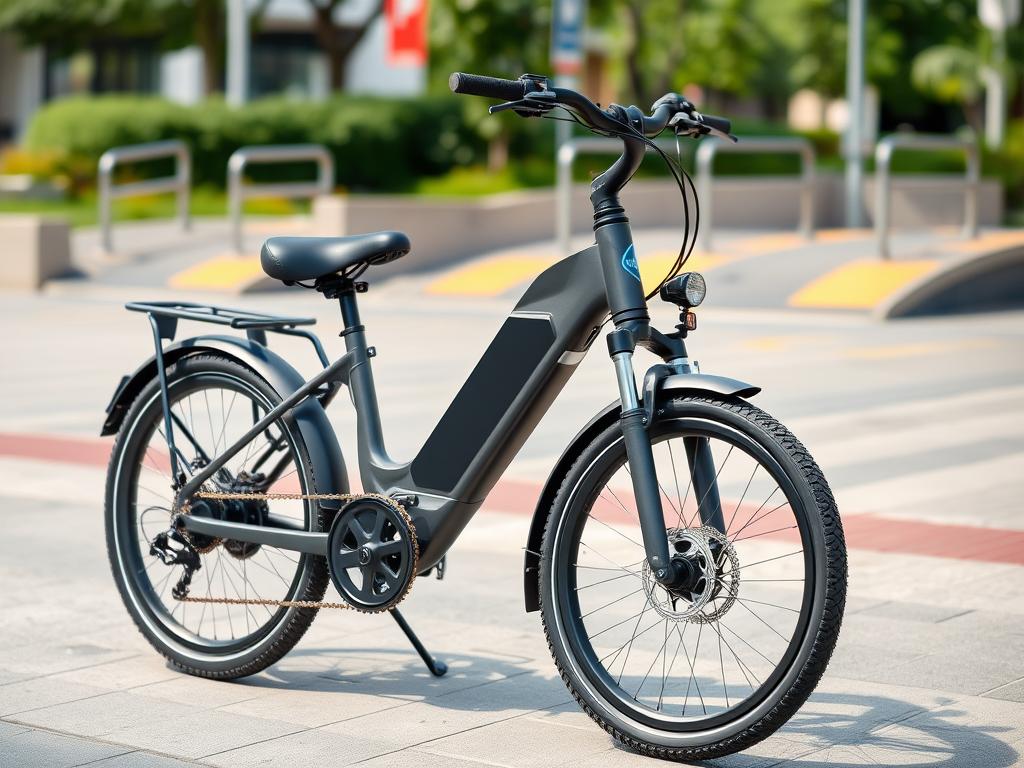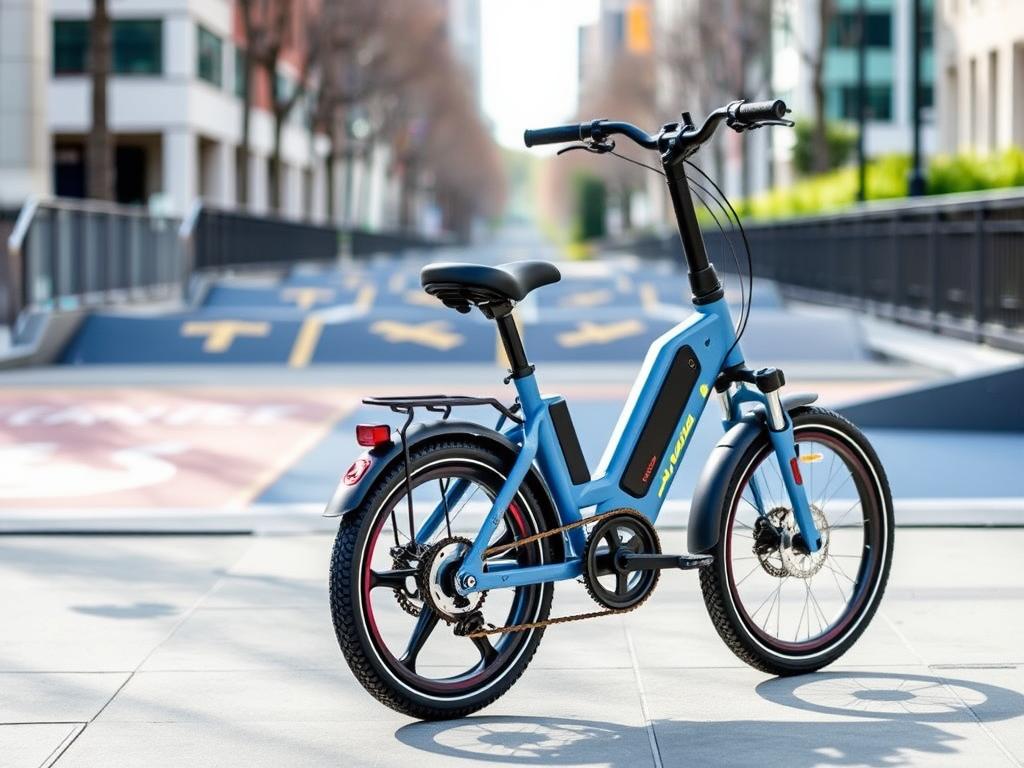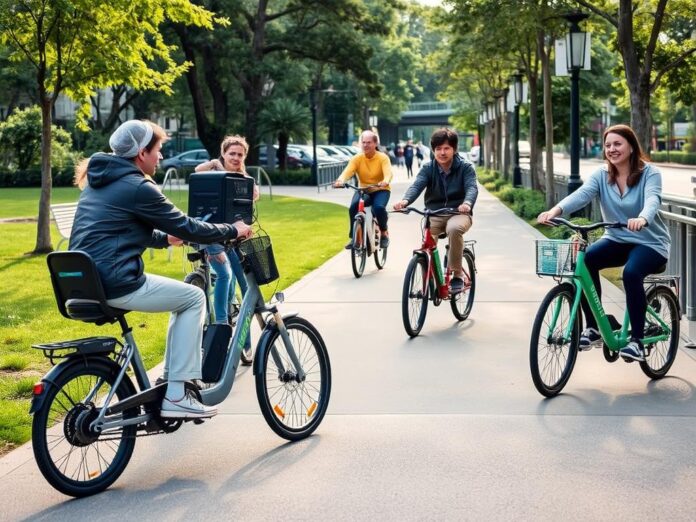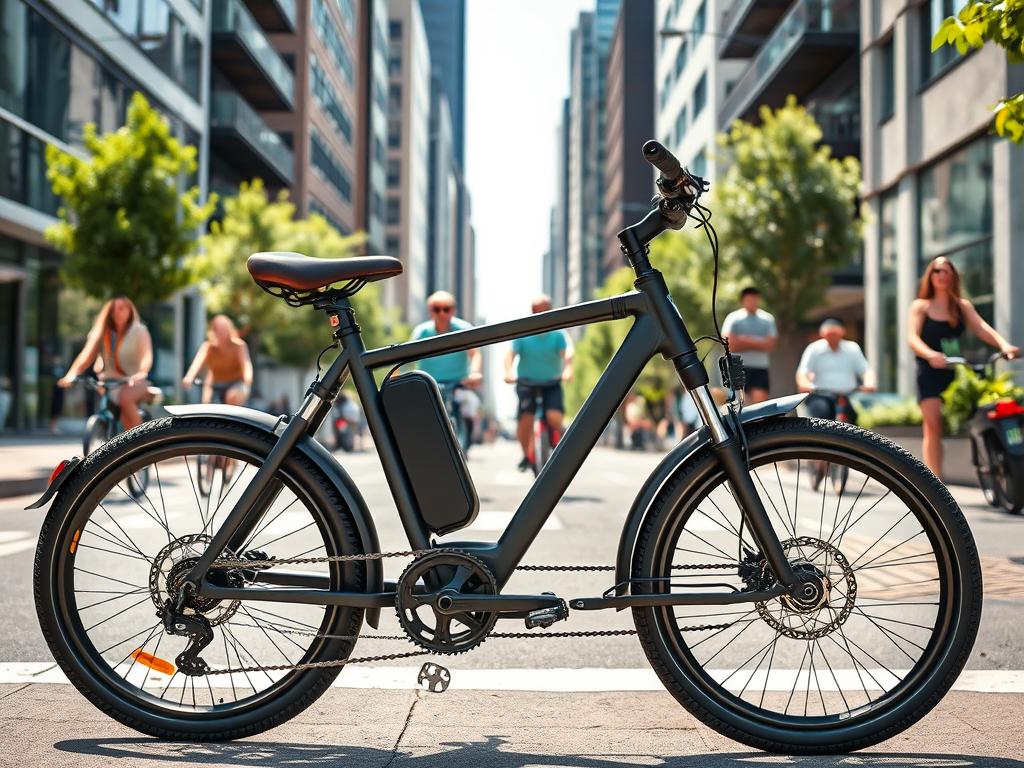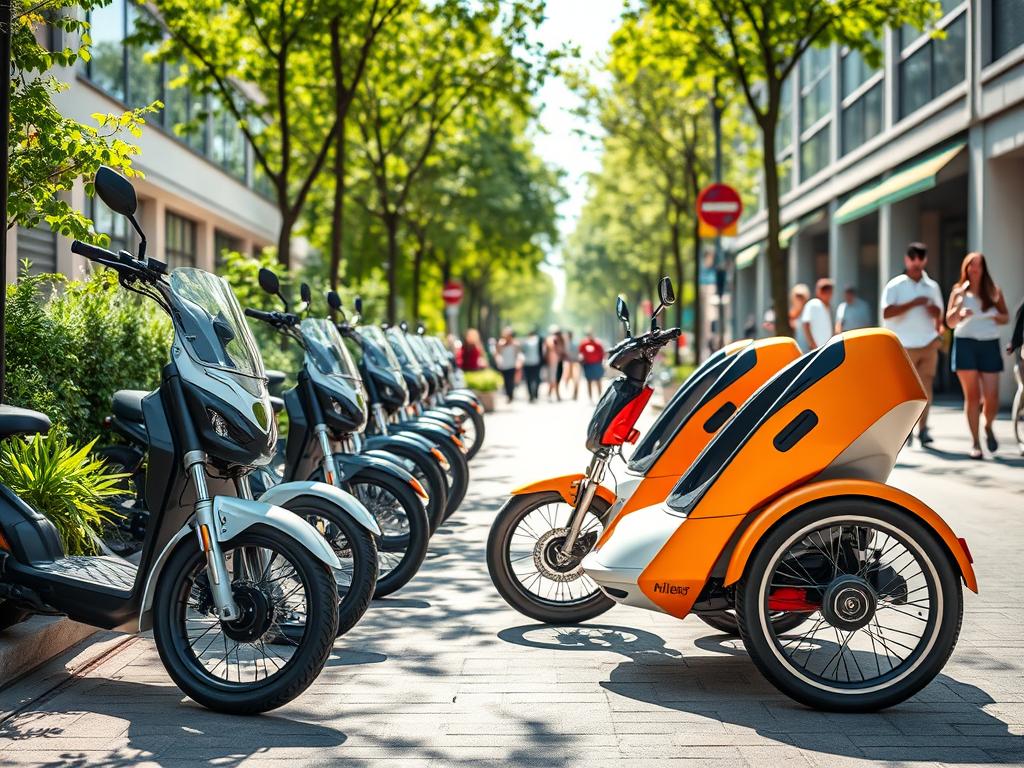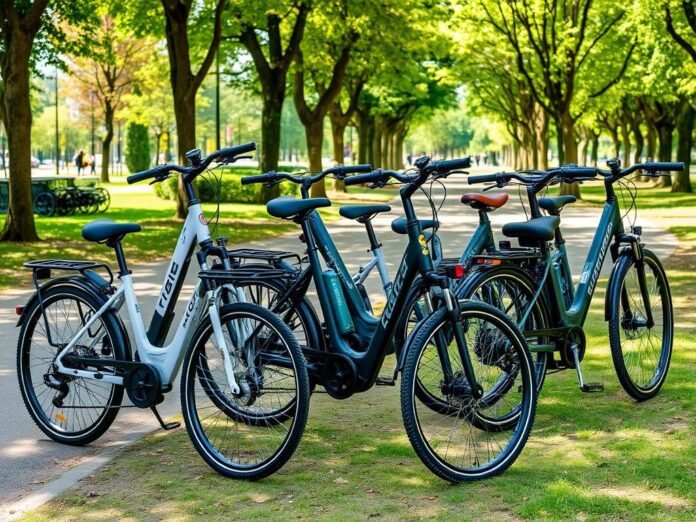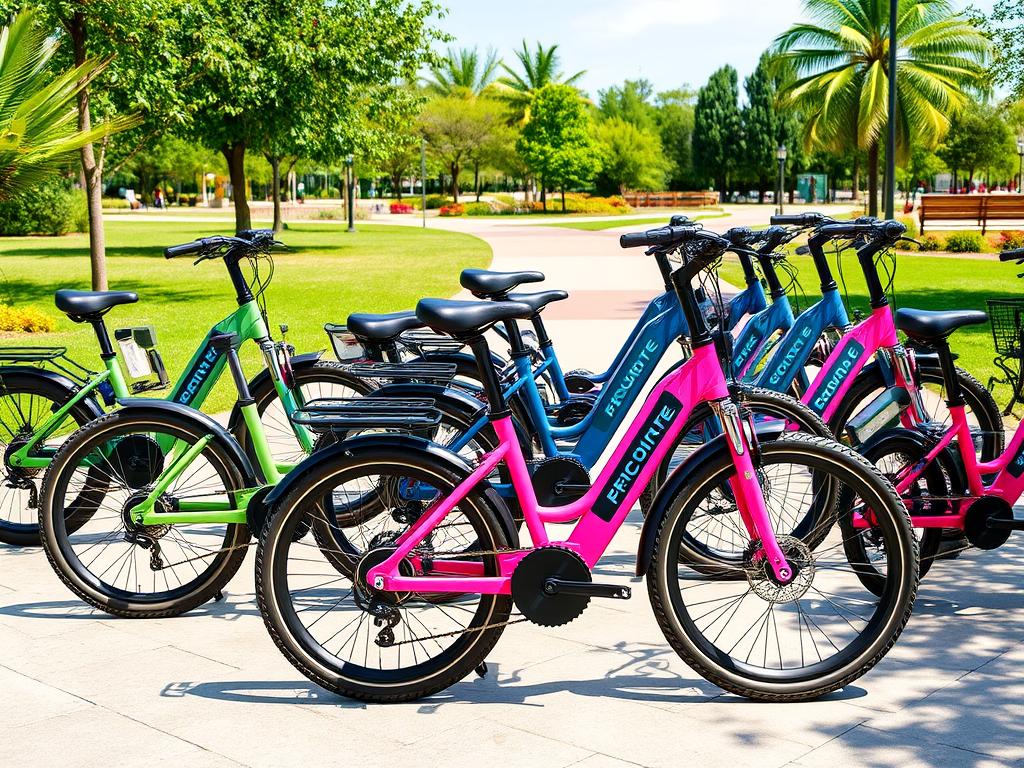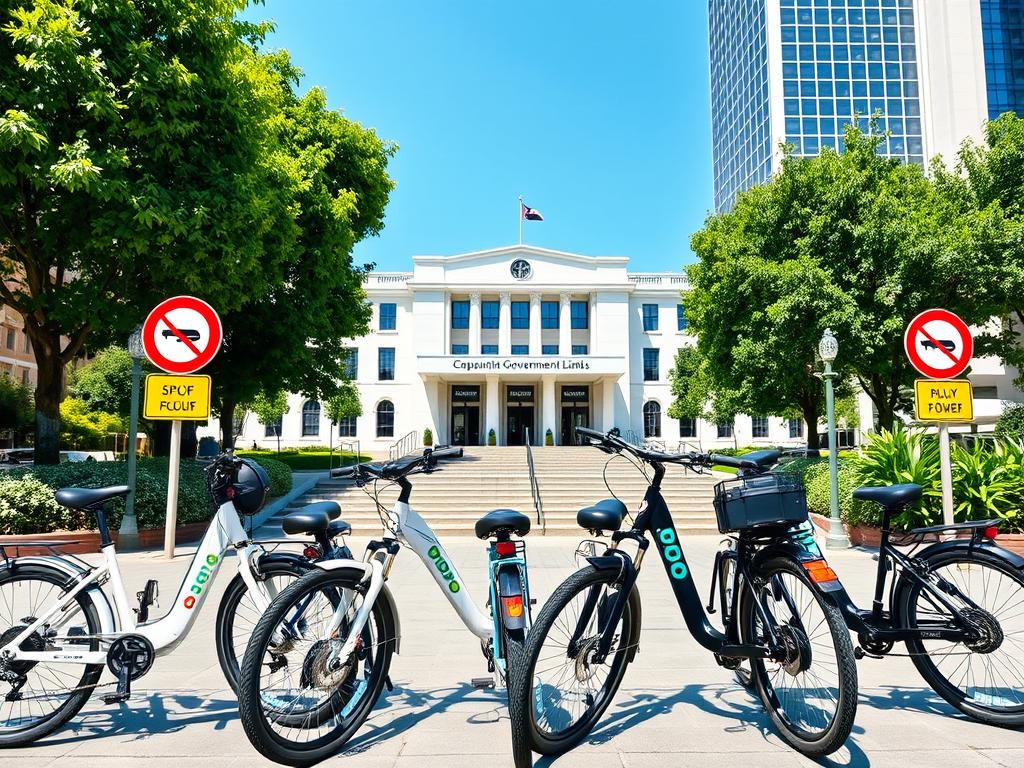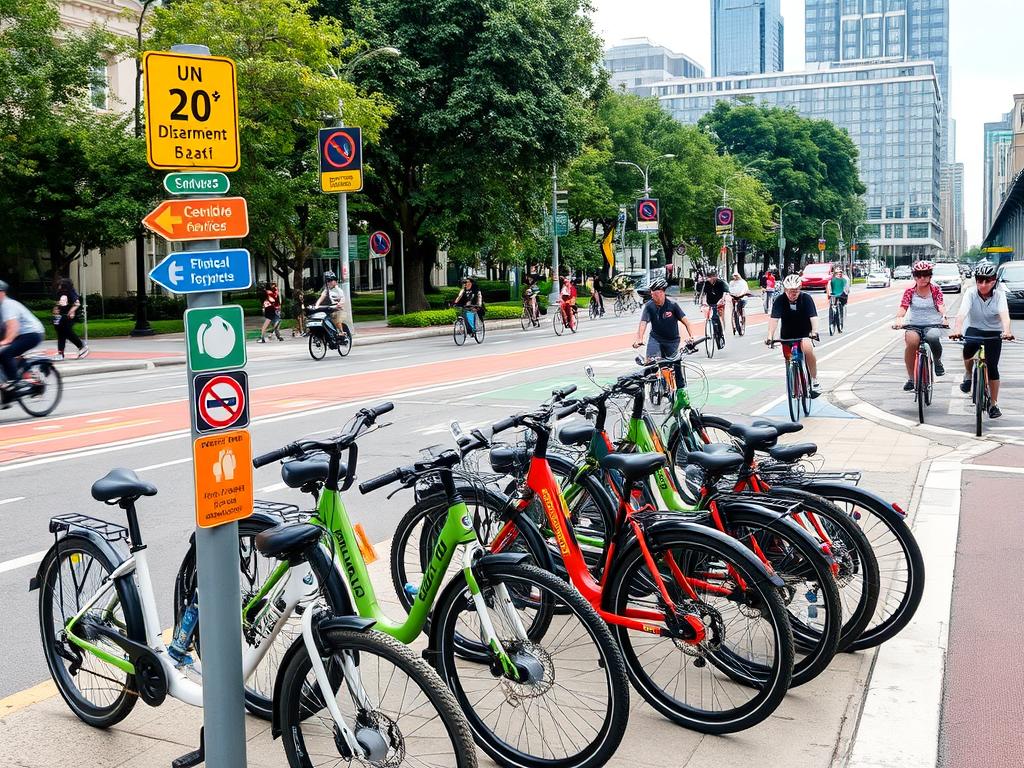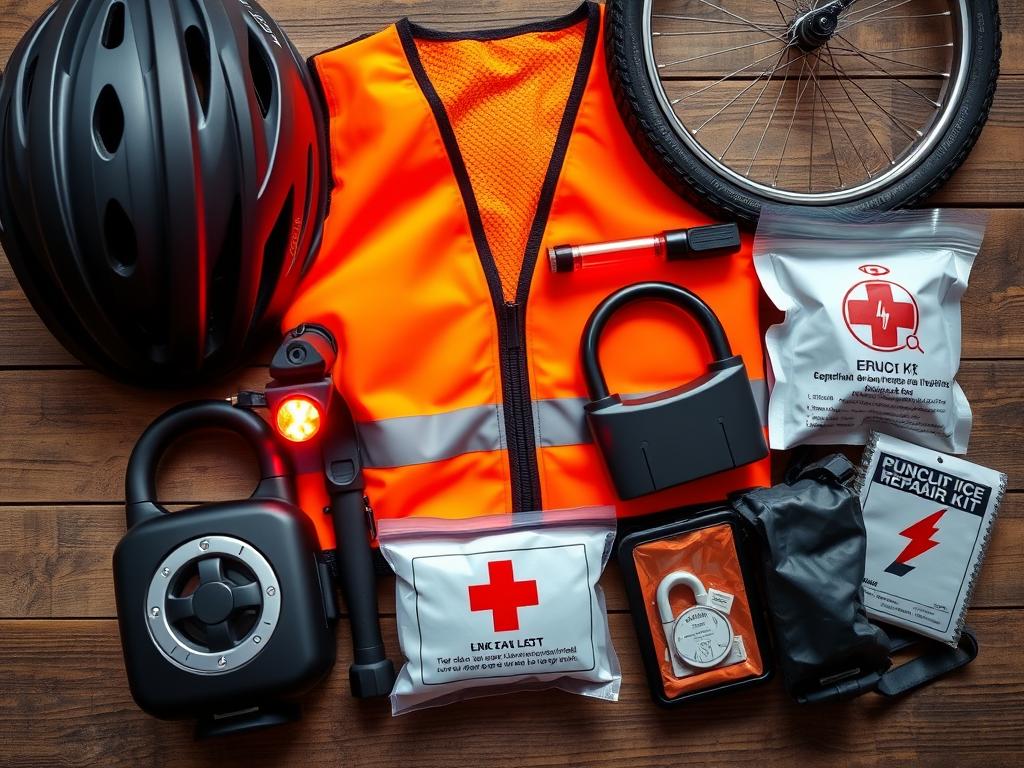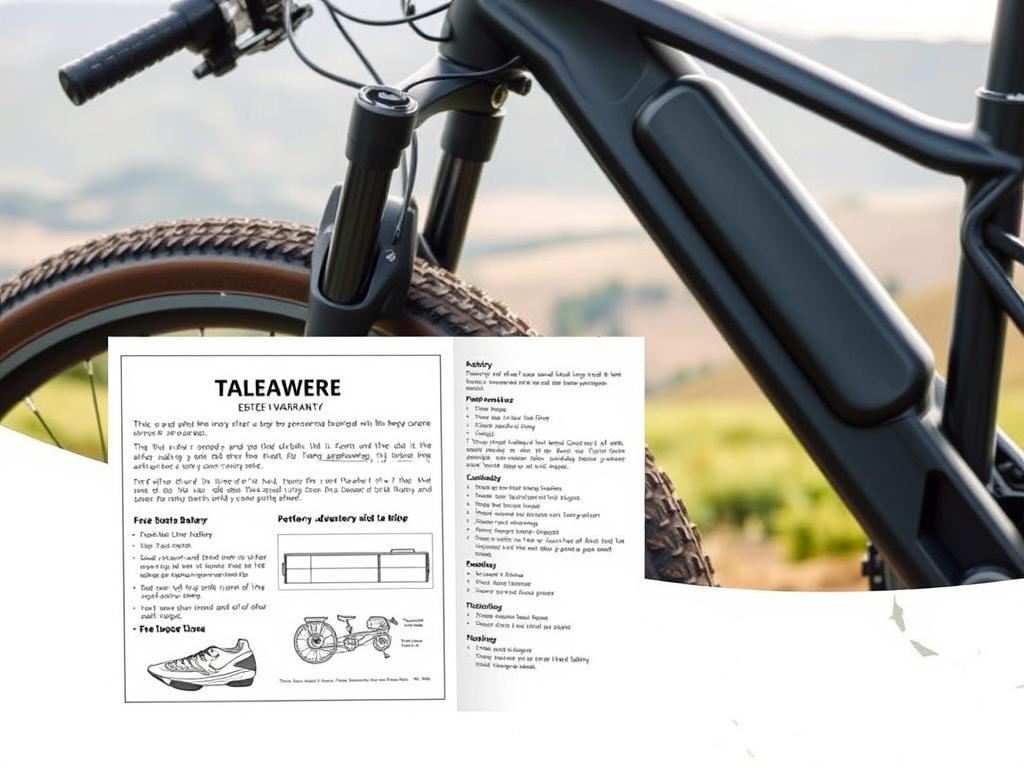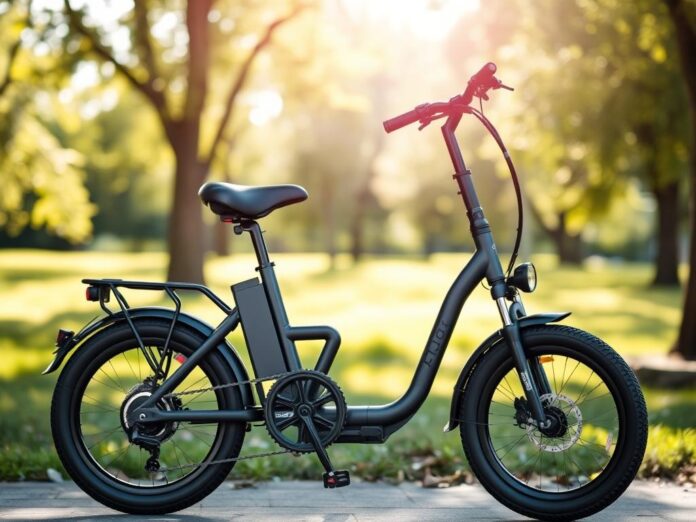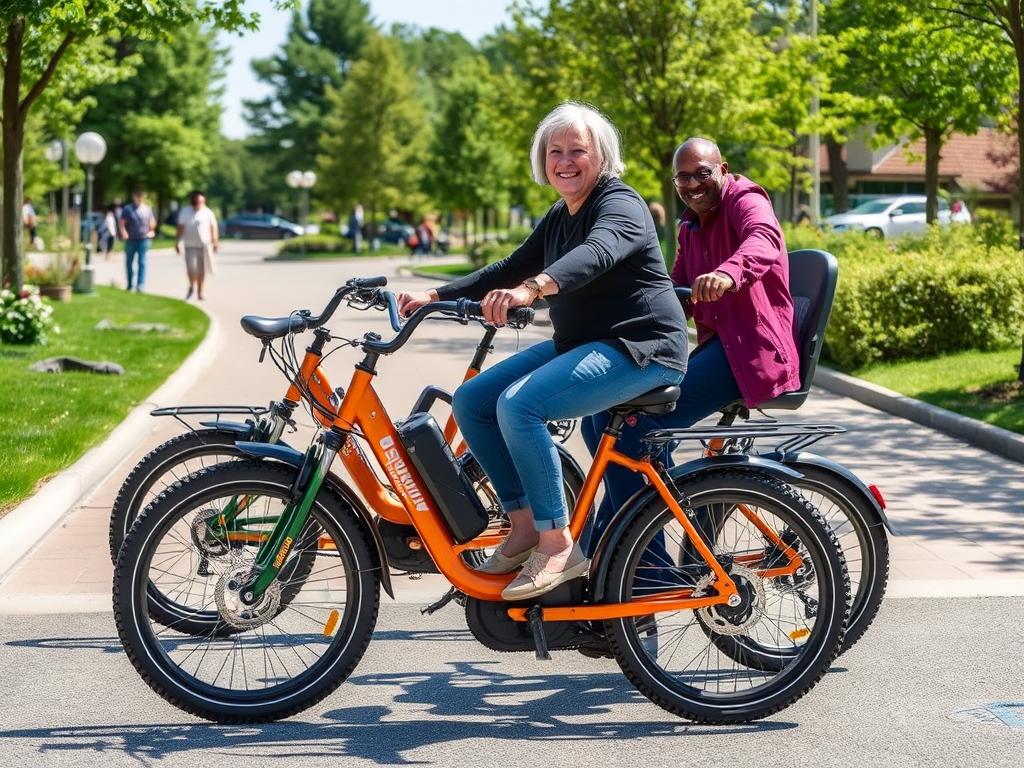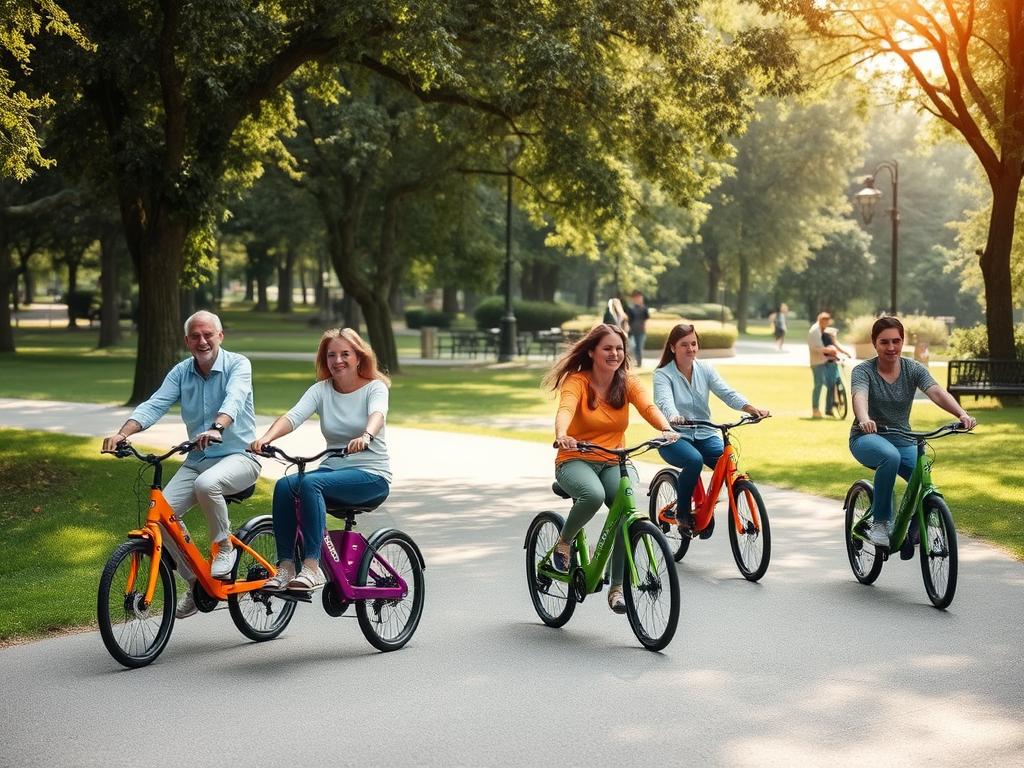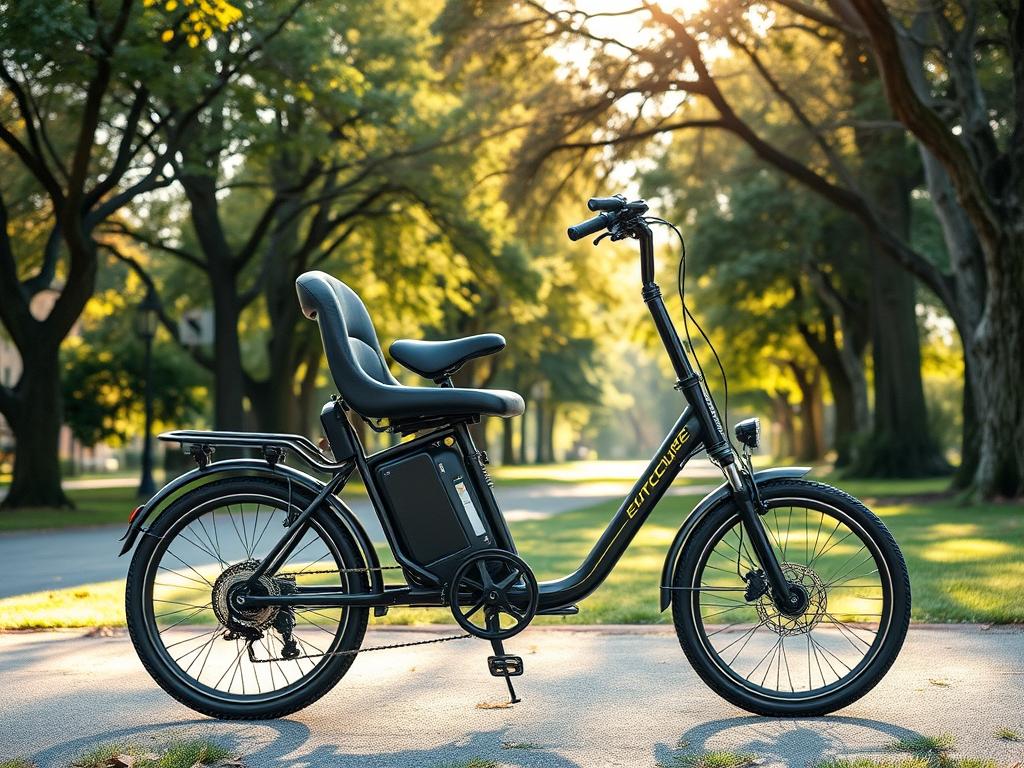As the field of rehabilitation and therapy grows, electric bikes (e-bikes) are becoming key tools. They offer a long range and a gentle way to exercise. This makes them a favorite in the USA for helping people recover and stay well.
Electric bikes let people exercise without putting too much strain on their muscles and joints. This helps them build strength and get fitter at their own speed. They’re great for those recovering from injuries or going through therapy, as they can move without making their condition worse. Plus, e-bikes give people a feeling of freedom and help them get back to being independent.
Key Takeaways
- Electric bikes offer a low-impact exercise option for individuals in rehabilitation and therapy settings.
- E-bikes can help users regain strength, increase fitness levels, and improve mobility during the recovery process.
- Adjustable electric assist on e-bikes allows for customized support based on individual physical conditions.
- E-bikes can be beneficial for a range of medical conditions, including stroke, Parkinson’s disease, and injury recovery.
- Integrating electric bikes into therapy programs can provide both physical and psychological benefits for patients.
Introduction to Electric Bikes in Therapy
Electric bikes, or e-bikes, are becoming more popular in physical therapy and rehabilitation. They offer a mix of pedaling help and adjustable power. This makes them great for low-impact exercise during recovery from injuries or mobility issues.
Overview of Electric Bikes
E-bikes are a new way to enjoy cycling with electric motor help. They let people with physical needs exercise without the full effort of pedaling.
Importance in Rehabilitation
E-bikes are great in Physical Therapy because of their adjustable power. Therapists can set the bike to match the user’s abilities. This helps build strength, improve mobility, and boost heart health.
For some, e-bikes help them ride without motors. For others, they let them cycle with friends and family. This builds a sense of community and social connection.
| Key Benefits of E-Bikes in Rehabilitation | Supporting Evidence |
|---|---|
| Improved Mobility and Independence | Theracycle, a leading provider of exercise equipment for individuals with neurological or mobility conditions, has been helping people since 1932. Their products have been recognized for their excellence, including being featured on Boston’s ABC affiliate segment and awarded the Best Assistive Exercise Manufacturer by GHP in 2019. |
| Enhanced Physical and Psychological Well-being | Testimonials from users, such as Sandra McKee, have reported improved mood and cognitive abilities after using Theracycle. Neurologist Thomas F. Morgan has also observed increased range of motion, decreased spasticity, improved muscle tone, strength, balance control, physical endurance, and psychological outlook for patients using Theracycle. |
| Versatility and Customization | The XTerra Fitness SB 540R Magnetic Recumbent Exercise Bike, for example, allows for the adjustment of time, resistance levels, and speed, improving overall comfort and therapeutic benefits. Adjusting the speed and RPM based on personal comfort levels during therapy sessions enhances the overall rehabilitation experience. |
As e-bikes become more common in rehabilitation, they are changing lives. Healthcare professionals and individuals are seeing their power in improving mobility, therapy, and rehabilitation equipment.
How Electric Bikes Aid Recovery
Electric bikes (e-bikes) are great for helping people recover. They make pedaling easier, which is good for muscles and joints. You can adjust how much help you get to fit your needs.
Low Impact Exercise Benefits
E-biking is easy on your body, perfect for those with joint problems or injuries. It lets you move without putting too much strain on your body. This is great for people getting over surgeries or illnesses.
Enhancing Mobility and Independence
E-bikes are a big help for people with disabilities or who can’t move as well. They make it easier to get around. This can really boost your mood and help you feel more connected to the world.
Using e-bikes in therapy can lead to better health and more freedom. It’s a win-win for your body and mind.

“The electric bike has been a game-changer for my recovery. The assisted pedaling makes it so much easier to get around, and the low-impact exercise has been crucial for rebuilding my strength and endurance after my recent injury.”
| Condition | How E-Bikes Help |
|---|---|
| Osteoarthritis | Reduced joint strain and customizable support levels |
| Heart Conditions | Gradual exercise intensity to manage heart health |
| Injury Recovery | Low-impact exercise and improved mobility |
Benefits for Specific Conditions
Electric bikes are changing the game in rehabilitation and cycling therapy. They help people with different health issues. This includes those recovering from strokes and those with Parkinson’s disease. E-bikes make it easier to move around, be independent, and feel better overall.
Stroke Rehabilitation
For stroke survivors, e-bikes are a big help. The motor makes it easier to ride, so you can go longer and feel stronger. This exercise helps regain muscle, improve balance, and move better. These are key steps in getting back on track after a stroke.
Parkinson’s Disease
Parkinson’s disease can be tough, but e-bikes offer a way forward. The Therapeutic Cycling they provide helps manage symptoms like tremors and balance problems. Regular rides keep muscles strong, improve movement, and boost life quality.
Injury Recovery
E-bikes are also great for healing from injuries. Their Adaptive Cycling features let you adjust settings to ease pressure on joints and muscles. This makes them perfect for rehabbing sports injuries. They help build strength and endurance safely, lowering the chance of getting hurt again.
| Condition | E-Bike Benefits |
|---|---|
| Stroke Rehabilitation | Improved endurance, regained muscle strength, enhanced mobility |
| Parkinson’s Disease | Management of tremors, rigidity, and balance issues, increased physical function |
| Injury Recovery | Reduced joint and muscle strain, gradual strength and endurance building |

“Electric bikes have revolutionized the way we approach rehabilitation and therapeutic cycling, offering a transformative solution for individuals with diverse health conditions.”
Psychological Benefits of Riding
Using an [https://ebikesus.com/basic-electric-folding-bikes/ electric bike] for exercise can really help your mental health. It can make you feel happier, less stressed, and more confident. Riding an e-bike can also help you meet new people and feel more connected.
Boosting Mental Health
Research shows that riding an e-bike can make you smarter and happier. In just eight weeks, people who rode three times a week for 30 minutes each saw big improvements. E-bikes might even be better for your mind than regular bikes.
They are especially good for older adults and people who have had strokes. These riders say e-bikes help them stay active, even when they can’t do much else.
Social Interaction Opportunities
E-bikes are great for meeting new people and feeling independent. They are easy to use and can take you places you need to go. This makes it easier for people to do things they thought they couldn’t do.

“Cycling on an e-bike is considered a low-impact sport, relieving pressure on joints compared to high-impact activities like running or jumping. Riding an e-bike can also help monitor and modify recovery post-injury, allowing for controlled movement and aiding muscle recovery.”
Also, riding in nature can make you feel better mentally. It can lower stress and depression. As e-bikes become more popular, they offer a fun way to get better physically and mentally.
Choosing the Right Electric Bike for Therapy
When picking an electric bike for therapy, think about what you need and want. E-bikes can help like treadmills and stationary bikes do. They improve heart health, leg strength, and joint stability. They also help with knee injuries and boost hip mobility, speeding up recovery.
Features to Consider
Look for an e-bike that fits your body and needs. Important features include:
- Adjustable handlebar setup for comfort and stability
- Dropper seat post for easy mounting and dismounting
- Non-slip pedals for secure footing
- Robust braking system, such as hydraulic brakes, for reliable stopping power
Recommended Brands
Choose e-bikes from trusted brands with good parts and a long warranty. Rad Power Bikes, Trek, and Specialized are known for quality. They have various e-bikes for different terrains and needs.
Start with the highest pedal assist and lowest gear for outdoor riding after rehab. Then, slowly lower the assist level for a better workout. E-bikes help riders pedal smoothly over different terrains, making rehab safer and more effective.
Safety Considerations
When using electric bikes for therapy, safety is key. Wearing the right gear and using helmets can prevent injuries. This makes your therapy safer and more effective.
Helmet Use and Safety Gear
Always wear a helmet that fits right when riding an electric bike. It’s a must-have for head protection in case of a fall. Also, don’t forget about elbow and knee pads, gloves, and sturdy shoes. They help reduce injury risks.
Recommended Riding Environments
It’s important to choose safe places to ride. Steer clear of busy roads and go for bike paths, quiet streets, or indoor cycling spots. These places are safer for your therapy rides.
| Safety Gear | Rehabilitation Equipment | Therapeutic Cycling |
|---|---|---|
| Helmet | Pedal Assist | Adjustable Resistance |
| Elbow and Knee Pads | Customizable Seat | Low-Impact Exercise |
| Gloves | Stability Features | Improved Mobility |
| Sturdy Footwear | Ergonomic Design | Cardiovascular Benefits |
Focus on safety and pick the right gear and places to ride. This way, you can use electric bikes safely for therapy. Always talk to your healthcare team to make sure your e-bike use fits your therapy needs.
Integrating Electric Bikes into Therapy Programs
Adding electric bikes (e-bikes) to physical therapy and rehab needs teamwork between health pros and patients. Physical therapists are key in making plans that fit each person’s recovery needs. They make sure e-bikes are part of the overall plan.
Collaborating with Health Professionals
Therapists work with patients to figure out what they need and want. They decide how e-bikes fit into the rehab plan. E-bikes might be used to warm up or to slowly increase activity.
Setting Goals and Milestones
- Clear goals help track progress and keep people motivated during recovery.
- Milestones mark improvements in physical therapy, rehabilitation equipment use, and restorative exercise skills.
- Regular checks and tweaks to the e-bike program keep it right for the person’s changing needs.
“Integrating e-bikes into therapy programs can be a game-changer for patients, helping them regain mobility, independence, and a sense of accomplishment during their recovery process.”
Working with health pros and setting reachable goals makes it easy to add e-bikes to physical therapy, rehabilitation equipment, and restorative exercise routines. This leads to a more effective and fulfilling rehab journey.
Personal Testimonials and Success Stories
Electric bikes have changed lives in amazing ways. One person broke their leg skiing but found an e-bike helped them recover. It let them move around and feel better faster, without putting too much strain on their body.
Another person had many injuries, like a torn ACL and a broken collarbone. They found e-biking was key to getting better. It helped them regain strength and improved their mood.
“The e-bike was a game-changer for me. It allowed me to get back on the road to recovery much faster than I ever thought possible. The low-impact exercise and sense of freedom it provided were invaluable during a difficult time.”
These stories show how Adaptive Cycling and Therapeutic Cycling can really help. Electric bikes make it easy to stay active and improve mobility. They’re a big part of the journey to getting stronger and feeling better for people with mobility issues.
Future of Electric Bikes in Rehabilitation
The future of electric bikes in rehabilitation is bright. New technologies are making them better and easier to use. You can expect to see more e-bikes in formal rehab programs soon.
Emerging Technologies
New features like better torque sensing and adjustable power are changing e-bikes for rehab. The Macfox X2, for example, can go up to 45 miles on one charge. With dual batteries, it can go up to 90 miles.
These updates let doctors tailor e-bikes to fit each patient’s needs. This makes rehab more personal and effective.
Increasing Accessibility
More people are learning about the benefits of e-bikes in therapy. Companies like Spinov8 Distribution are making adaptive e-bikes available. They help people with mobility issues due to injuries or chronic illnesses.
Experts, like Bosch’s Steven Sheffield, think e-bikes might soon be prescribed by doctors. They might even be covered by Health Savings Accounts. This could make e-bikes even more accessible for rehab.
FAQ
Q: How do electric bikes benefit rehabilitation and therapy?
A: Electric bikes help by making pedaling easier, which is good for muscles and joints when you’re recovering. They offer a gentle way to build strength and fitness without too much effort.
Q: What conditions can benefit from using electric bikes for rehabilitation?
A: Electric bikes are great for people with heart issues, osteoarthritis, or recovering from injuries, surgeries, or illnesses. They’re a gentle way to exercise and improve mobility without putting too much stress on joints.
Q: How do electric bikes contribute to the psychological benefits of rehabilitation?
A: Using an electric bike can make you feel better, reduce stress, and boost your mood. It helps build confidence, self-esteem, and encourages social interaction, making the recovery journey more positive.
Q: What factors should be considered when selecting an electric bike for rehabilitation?
A: Think about where you’ll ride, your needs, and what you want to achieve. There are many electric bikes out there. Choose one that fits your needs and provides the right support and comfort.
Q: How can electric bikes be safely integrated into therapy programs?
A: Working with health professionals is key to adding electric bikes to therapy. Always wear a helmet and safety gear. Pick safe places to ride that help your recovery.
Q: What are some real-life success stories of using electric bikes for rehabilitation?
A: Many people have found electric bikes to be a game-changer in their recovery. They’ve helped with physical therapy and mental health, making it easier to regain independence and mobility.
Q: What is the future of electric bikes in rehabilitation?
A: The future of electric bikes in rehab looks bright. New tech is making them better and easier to use. Improvements in motors, batteries, and features are making them more helpful for therapy.


